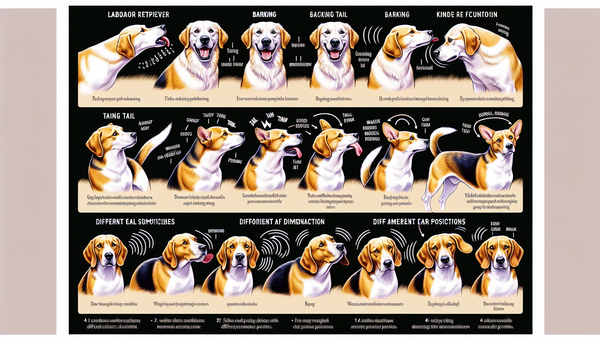Understanding the Silent Language of Dogs
Dog lovers and pet parents often wish they could decode every woof, growl, and tail wag their canine companions offer. Understanding dog language isn’t just about strengthening the bond between you and your pet—it can also be crucial for their wellbeing. Join me, Amanda of Barklyz, as we delve into the fascinating world of dog communication and uncover what our furry friends are trying to tell us with their mysterious pet signals.
The Vocal Babble: Barks, Whines, and Howls
Dogs vocalize in many ways, each with a unique meaning. A high-pitched bark can suggest excitement, while a low, throaty bark may signal a warning or threat. Whines or whimpers often indicate submission or a desire for attention, and howling can be a sign of loneliness or distress. Learning to interpret these vocalizations can help you respond better to your dog’s needs, creating a happier environment for both of you.
The Tale of the Tail: Wagging, Quivering, and Drooping
It’s a common misconception that a wagging tail always equates to a happy dog. In fact, tail movements can represent a spectrum of emotions. A relaxed, wagging tail typically means a dog is friendly and approachable, while a tail held high and still suggests alertness. A low, slow wag can indicate insecurity, and a tucked tail is often a sign of fear. For an in-depth exploration of tail positions and their meanings, check out the insights offered by the American Kennel Club.
Eyes, Ears, and Whiskers: The Subtle Cues
Have you ever noticed the intensity in a dog’s eyes when they want something or the way their ears perk up at a peculiar sound? Those are all parts of the nuanced dog communication system. Dilated pupils can imply excitement or playfulness, while narrowed eyes may be a sign of aggression. Similarly, a dog who is attentive or anxious will have ears pointed forward, while relaxed ears tend to be more sideways or backward facing. Witnessing these subtle cues can improve your understanding of dog language. The ASPCA’s body language guide is an excellent resource for further learning.
From Sniffs to Licks: The Sensory Talk
Every sniff, lick, or nudge from a dog serves a communicative purpose. Sniffing allows dogs to understand their environment and the creatures within it, including you. Lick greetings can be a sign of affection or a plea for attention, while nose nudges often want to prompt a response or action from you. Recognizing and acknowledging these sensory communications can enrich your interactions.
Posture and Movement: An Action Speaks Volumes
Is your dog crouched in a playful bow, or are they standing stiffly with their weight forward? These postures can mean the difference between an invitation to play and a warning to back off. Rapid movements like jumping can show excitement or joy, while slow-motion can indicate caution or uncertainty.
The Art of Reading Pet Signals
Deciphering your dog’s communication isn’t just a skill—it’s an art. It takes patience, observation, and understanding. By paying close attention to the variety of signals your dog uses, you’ll soon start to understand their language. Here are some key pointers for tuning in to what your dog is saying:
- Context is crucial; consider the environment and what’s happening around your dog.
- Mixed signals can occur; learn to recognize when your dog feels conflicted.
- Health issues can affect behavior, so always monitor for underlying problems.
For a more comprehensive guide to pet signals, the Cesar’s Way website offers practical advice on dog behavior and communication.
Enhance Training with Communication Insights
Integrating your knowledge of dog communication into training routines can greatly benefit your dog’s learning process. Commands become clearer when you know how your dog perceives and responds to your cues, leading to more effective training sessions. This understanding further establishes you as a confident and empathetic leader in your dog’s eyes.
Creating a Dialogue: Acknowledging Responses
Communication is a two-way street. Your responses to your dog’s signals teach them how effective their communication is. When you acknowledge their attempts to communicate, you validate their behavior and encourage further interaction. This strengthens your relationship and builds trust.
Final Thoughts on Canine Conversations
As dog owners, it’s our responsibility and delight to become fluent in the language of our pets. With time and practice, we can become conversational in these woofs and whiskers. Remember, patience and love are key. Your furry friend will appreciate your efforts to understand their communication and will likely become more communicative in return.
For all things related to canine care and companionship, stay tuned to Barklyz, your go-to platform for enriching your life with your beloved four-legged family member. From dog communication to wellness, we’re here to support you and your furry friend on this wonderful journey together.





